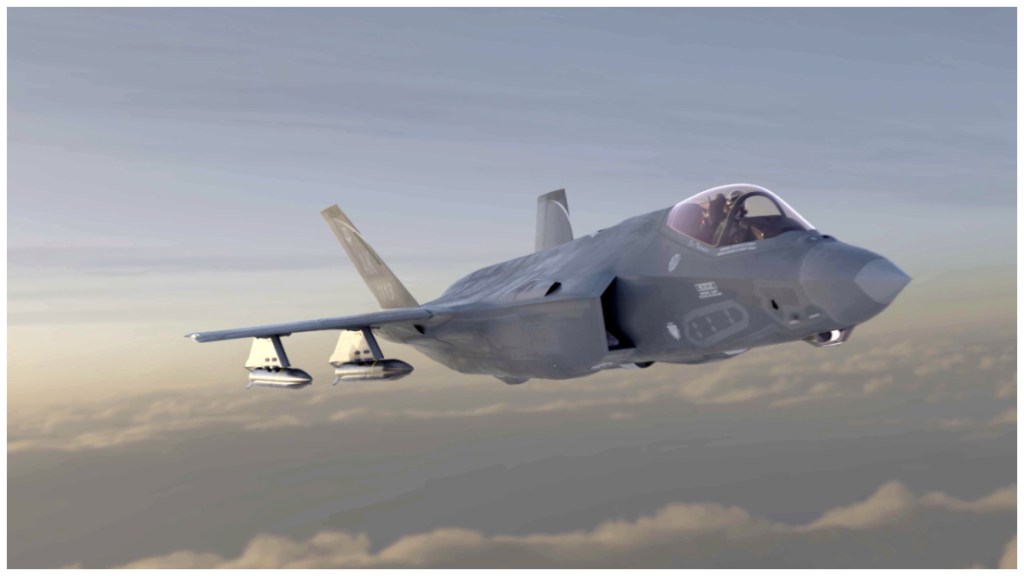In response to recent intrusions by China and Russia in Alaska, the United States has decided to bolster its defence capabilities by equipping its fighter aircraft with a new hypersonic missile named ‘Mako’. This decision, made in the lead-up to the presidential election, has sparked discussions worldwide, particularly in Russia and China. The Mako missile promises to enhance America’s security in conflict zones, rendering its defences nearly impregnable.
The Mako Hypersonic Missile
The Mako missile, developed by Lockheed Martin, is a multi-mission weapon designed for diverse attack scenarios, including surface, sea, air, and air defence systems. This advanced missile will be installed in all American fighter jets, such as the F-15, F-16, F-18, F-22, and F-35, as well as in bombers and surveillance aircraft. Its capabilities have been rigorously tested across various platforms, ensuring its readiness for deployment.
Lockheed Martin introduced the Mako missile to the world, naming it after the Mako shark, renowned for being the fastest-swimming fish in the ocean. The missile’s design and functionality reflect the agility and speed of its namesake, making it a formidable addition to the US military arsenal.
Enhancing Military Capabilities
The US Navy, Navy SEAL commandos, and the US Air Force are set to install the Mako missile in all their military aircraft. The missile’s versatility allows it to be used in any mission and launched from any aircraft, providing a significant tactical advantage. Its ability to attack various targets, from sea and air to complex air defence systems, makes it a vital tool for modern warfare.
The Mako missile can be installed in fourth, fifth, and sixth-generation stealth fighter aircraft, enhancing the combat capabilities of the US military. This air-launched missile can be fired from any aircraft, ensuring flexibility and rapid deployment in various combat scenarios. Similar to the Tomahawk missile, the Mako hypersonic missile is expected to significantly boost the strength of the US Army, Air Force, and Navy.
The Russian Kinjal Hypersonic Missile
The development of the Mako missile comes in response to Russia’s deployment of the ‘Kinjal’ (or Kinzhal and KH-47M2) hypersonic missile. Russia has utilized the Kinjal missile in the ongoing conflict with Ukraine, launching it from MiG-31 aircraft. The Kinjal missile has demonstrated its effectiveness in combat, highlighting the strategic advantage hypersonic weapons can provide.
Russia’s Kinjal missile travels at speeds exceeding Mach 10, making it difficult for existing defence systems to intercept. Its ability to carry both conventional and nuclear warheads further enhances its strategic value. The missile’s deployment in Ukraine has underscored the need for the US to develop comparable hypersonic capabilities to maintain a balance of power.
Strategic Implications
The introduction of the Mako missile is a significant step for the US in maintaining its military superiority. Hypersonic weapons, capable of traveling at speeds greater than five times the speed of sound, present a formidable challenge for defence systems. Their speed, maneuverability, and ability to carry various payloads make them critical assets in modern warfare.
The deployment of the Mako missile will likely influence global military strategies, prompting other nations to accelerate their hypersonic weapon development programs. As hypersonic technology continues to evolve, the strategic landscape will shift, with countries striving to develop advanced systems to counter potential threats.
Bottomline
As hypersonic weapons become more integral to military strategies, the development and deployment of the Mako missile underscore the importance of maintaining technological superiority in an ever-evolving global security environment.


